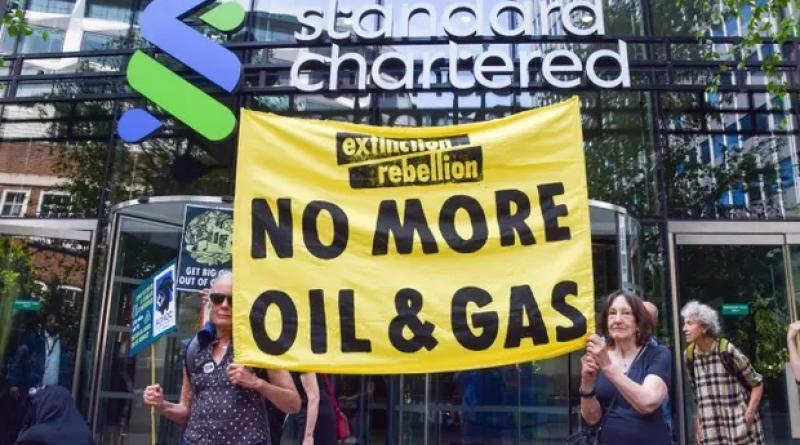We can’t afford to be climate doomers

Stanford engineering professor and renewable energy expert Mark Z Jacobson tweeted the other day, “Given that scientists who study 100% renewable energy systems are unanimous that it can be done why do we hear daily on twitter and everywhere else by those who don’t study such systems that it can’t be done?” A significant percentage of the general public speaks of climate change with a strange combination of confidence and defeatism: confidence in positions often based on inaccurate or outdated or maybe no information; defeatism about what we can do to make a livable future. Maybe they just get their facts from other doom evangelists, who flourish on the internet, no matter how much reputable scientists demonstrate their errors.
They’re surrendering in advance and inspiring others to do the same. If you announce that the outcome has already been decided and we’ve already lost, you strip away the motivation to participate – and of course if we do nothing we settle for the worst outcome. It often seems that people are searching harder for evidence we’re defeated than that we can win. Warnings are a valuable thing, given with the sense that there’s something we can do to prevent the anticipated outcome; prophesies assume the future is settled and there’s nothing we can do. But the defeatists often describe a present they assert are locking in the worst outcomes.
One day this week, someone told me that she was “angry at people’s refusal to acknowledge what’s happening to the planet” and when I waved a couple of surveys at them showing that in 2023 “Nearly seven-in-ten Americans (69%) favor the U.S. taking steps to become carbon neutral by 2050” and in 2021 “three-quarters (75%) of adults in Great Britain said they were worried about the impact of climate change” they shifted to complaining about poor leadership and climate deniers. So far as I could tell, she wanted to be angry at obstacles, and if one was removed, she had others.
The climate scientist Zeke Hausfather told journalist Shannon Osaka recently “It’s fair to say that recently many of us climate scientists have spent more time arguing with the doomers than with the deniers” for a Washington Post story titled, “Why climate ‘doomers’ are replacing climate ‘deniers’”. The people putting out defeatist frameworks have more impact than outright deniers, not least because deniers are rightwingers and the right is already committed to climate inaction. Doomers discourage people who otherwise might act, so they’re working toward the worst outcomes they claim to dread. You would expect them to be quietly unmotivated, but a lot of them seem to have an evangelical passion for recruiting others to their views.
The same day I was told the public doesn’t care, a couple of other people told me that “the media is not covering” the climate crisis. This was a reasonable position five or 10 years ago, but isn’t at present. Mainstream print media, with its own enthusiasm for grim takes, oversimplification of nuanced climate reports, and distractions like last fall’s fake fusion energy breakthrough, is not doing the job the way I’d like to see it get done. But it is covering climate. There were, for example, multiple climate stories on the online front pages of the Washington Post and the New York Times that day.
Yet another person complained to me that day, “it’s hard to stay hopeful when the New York Times tells us no need to worry, just take a nap,” referencing a story in the Times about Spanish siestas as a way of coping with heat, but when I went to look that story was clustered on the webpage with a number of serious reports about the current extreme heat and climate emergency. There are a lot of things wrong with the New York Times, but the paper was covering climate seriously that day.
Many things that were once true – that we didn’t have adequate solutions, that the general public wasn’t aware or engaged – no longer are. Outdated information is misinformation, and the climate situation has changed a lot in recent years. The physical condition of the planet – as this summer’s unprecedented extreme heat and flooding and Canada’s and Greece’s colossal fires demonstrate – has continued to get worse; the solutions have continued to get better; the public is far more engaged; the climate movement has grown, though of course it needs to grow far more; and there have been some significant victories as well as the incremental change of a shifting energy landscape.
Most positive climate news doesn’t make very dramatic reading, and I usually find it in technical journals, tweets from scientists and policymakers, and climate-specific news services. It’s often about incremental stuff, like that we’re deploying more wind and solar and using less fossil fuel to generate electricity. Or it’s about legislation or technical things like new battery storage materials or less polluting concrete formulas. Or it unpacks surveys showing that most people support climate action. Mostly they tell us that we have the capacity or are increasing the capacity to do what will limit the crisis. They’re interim reports, and the public often seems to want final scores, to know how the story will end. We don’t know because we’re deciding that now.
A lot of people in this society also like certainty and while it’s obviously foolish to be certain we will win, somehow certainty we will lose isn’t subject to the same judgments. That certainty seems to come in part from an assumption that change happens in predictable ways, so we can know the future, or that there are environmental but not social and technological tipping points. But, as the thinktank Carbon Tracker notes “The S-curve is a well-established phenomenon where a successful new technology reaches a certain catalytic tipping point (typically 5-10% market share), and then rapidly reaches a high market share (i.e. 50%+) within just a couple more years once past this tipping point. Solar panels, wind turbines and lithium-ion batteries have all followed such learning curves. Each technology has declined in cost by over 90% in the past two decades. And so their growth has followed an S-curve model.” Change is often not linear but exponential, or it’s unpredictable, like an earthquake releasing centuries of tension. Big changes start small, and history is studded with surprises.
I don’t know why so many people seem to think it’s their job to spread discouragement, but it seems to be a muddle about the relationship between facts and feelings. I keep saying I respect despair as an emotion, but not as an analysis. You can feel absolutely devastated about the situation and not assume this predicts outcome; you can have your feelings and can still chase down facts from reliable sources, and the facts tell us that the general public is not the problem; the fossil fuel industry and other vested interests are; that we have the solutions, that we know what to do, and that the obstacles are political; that when we fight we sometimes win; and that we are deciding the future now.
I wonder sometimes if it’s because people assume you can’t be hopeful and heartbroken at the same time, and of course you can. In times when everything is fine hope is unnecessary. Hope is not happiness or confidence or inner peace; it’s a commitment to search for possibilities. Feelings deserve full respect as feelings, but all they inform you about is you. History is full of people who continued to struggle in desperate and grim circumstances, and so is the news from Ukraine to the Philippines. Some lived to see those circumstances change because of that struggle. Maybe this is what Antonio Gramsci meant with his famous phrase “pessimism of the intellect, optimism of the will”. Some days I think that if we lose the climate battle, it’ll be due in no small part to this defeatism among the comfortable in the global north, while people in frontline communities continue to fight like hell for survival. Which is why fighting defeatism is also climate work.
cover photo:‘They’re surrendering in advance and inspiring others to do the same.’ Photograph: Vuk Valcic/Sopa Images/Shutterstock






